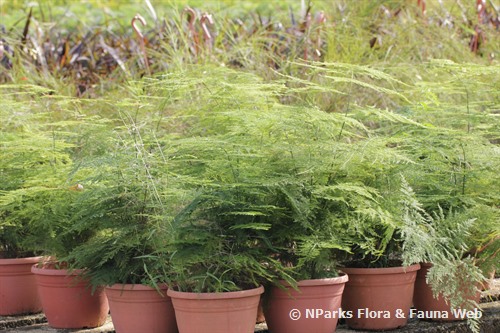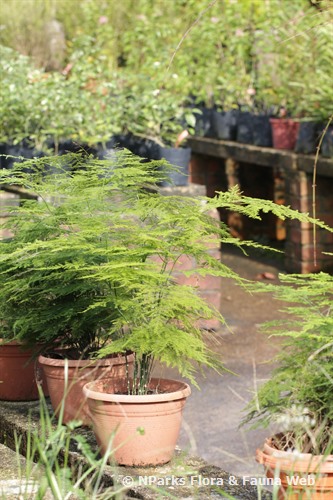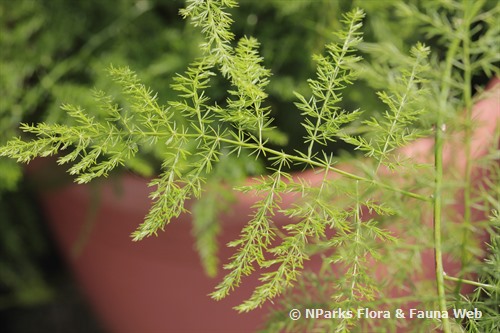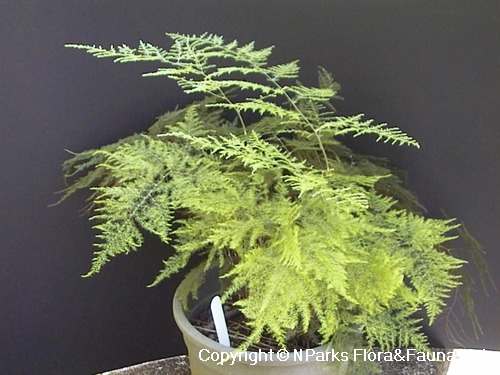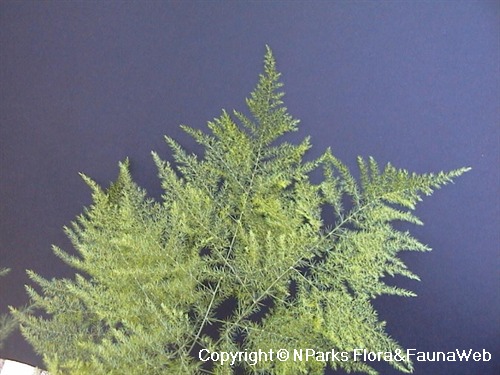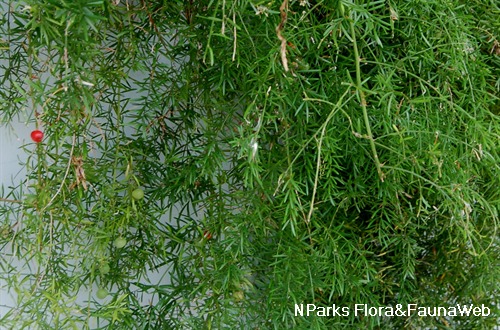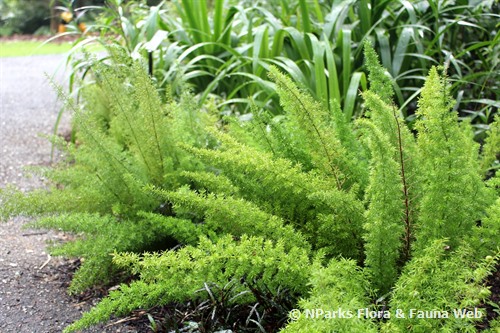.jpg)
Back
Asparagus setaceus
| Family Name: | Asparagaceae |
| Synonyms: | Asparagus plumosus |
| Common Name: | Fern Asparagus, 文竹 |
Name
Classifications and Characteristics
| Plant Division | Angiosperms (Flowering Seed Plants) (Monocotyledon) |
|---|---|
| Plant Growth Form | Shrub |
| Lifespan (in Singapore) | Perennial |
| Mode of Nutrition | Autotrophic |
Biogeography
| Native Distribution | South Africa |
|---|---|
| Native Habitat | Terrestrial |
Description and Ethnobotany
| Growth Form | A bushy evergreen and twining vine which has scrambling stems. |
|---|---|
| Foliage | The true leaves are tiny scales. |
| Stems | Feathery, fern-like, green; appeared to look like leaves but they are actually flattened shoots (cladode or cladophyll); stems turn woody as mature, and produce spines. |
| Flowers | Small, white flowers. |
| Fruit | Purple berries. |
| Etymology | The genus Asparagus is Greek, for plants sprouting edible turions from the rootstock. The specific epithet setaceus means bristly, with bristle or stiff hairs. |
Landscaping Features
| Desirable Plant Features | Ornamental Foliage |
|---|---|
| Landscape Uses | Interiorscape/ Indoor Plant, Container Planting, Suitable for Hanging Baskets |
Plant Care and Propagation
| Light Preference | Semi-Shade |
|---|---|
| Water Preference | Moderate Water |
| Plant Growth Rate | Moderate |
| Rootzone Tolerance | Moist Soils, Well-Drained Soils, Fertile Loamy Soils |
Foliar
| Foliage Retention | Evergreen |
|---|---|
| Mature Foliage Colour(s) | Green |
| Foliar Modification | Scale-like |
| Leaf Area Index (LAI) for Green Plot Ratio | 3.5 (Shrub & Groundcover - Monocot) |
Non - Foliar and Storage
| Stem Type & Modification | Cladode |
|---|
Floral (Angiosperm)
| Flower Colour(s) | White |
|---|
Fruit, Seed and Spore
| Mature Fruit Colour(s) | Purple |
|---|
Image Repository
Others
| Master ID | 400 |
|---|---|
| Species ID | 1696 |
| Flora Disclaimer | The information in this website has been compiled from reliable sources, such as reference works on medicinal plants. It is not a substitute for medical advice or treatment and NParks does not purport to provide any medical advice. Readers should always consult his/her physician before using or consuming a plant for medicinal purposes. |

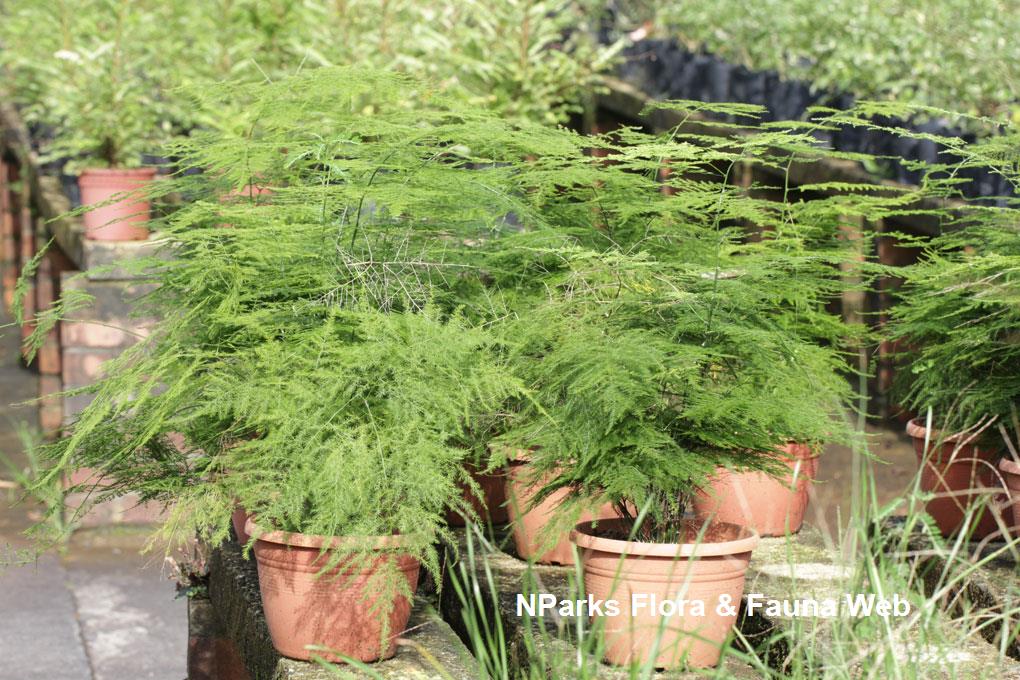
.jpg)
